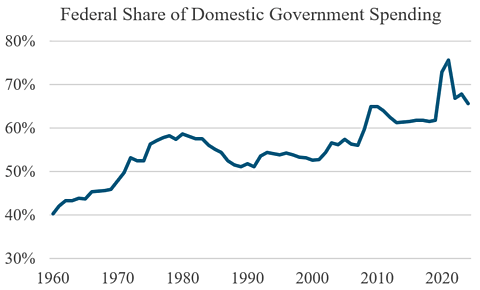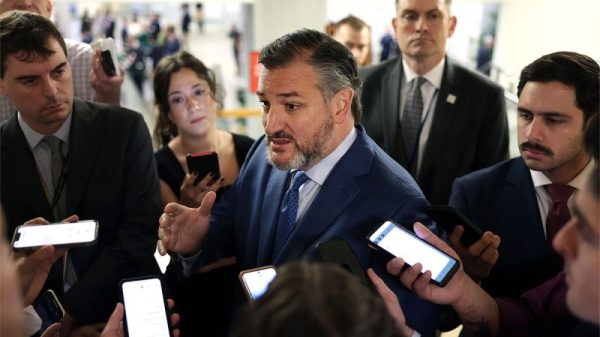In the October 23 Wall Street Journal, Peggy Noonan discusses core features of American government and ponders how President Trump fits in. She focuses on the Founders and the constitutional balance they created between the federal legislative, executive, and judicial branches.
The republic they devised produced not efficiency but equilibrium. It established not only a system but a spirit. It has seen us through for 237 years. Are we maintaining our republic? Is our equilibrium holding?
Noonan is talking about equilibrium between the branches, but that is only one structural feature of the US Constitution. Every bit as important is the constitutional balance between federal and state power, and on that front, we have been out of equilibrium for a century as the federal government grabs ever more power from the states and the people.
This is easy to see for fiscal power. The chart shows Bureau of Economic Analysis (BEA) data for the federal share of nondefense, noninterest government spending. In other words, the federal share of overall domestic program spending, with the rest being carried out by state and local governments. (I’ve assigned federal aid-to-state spending to the federal government.)
The federal share of spending rose from 40 percent in 1960 to 66 percent by 2024. The earliest BEA data is for 1929. In that year, before the New Deal and World War II, the federal share of government spending was less than 20 percent.
The Founders got a lot right, but the Constitution did not include sufficient protection against federal spending increases. For example, it did not include a requirement to balance the annual federal budget.
Also, underappreciated by the Founders was the power of logrolling to get around constitutional constraints. By the mid-19th century, Congress was already passing many low-value local projects by packaging them together in spending bills, even though each project by itself would not garner majority support. I explore the problem in this study.
As Noonan notes, Madison’s idea was that “ambition must be made to counteract ambition” to help defend our liberties. But with logrolling on spending bills, the ambitions of both parties on Capitol Hill join forces against the people and against the long-term interests of the nation.
Noonan asks, “Are we maintaining our republic? Is our equilibrium holding? The last nine months a lot of lines seem to have been crossed.” Regarding the federalism equilibrium, the danger line was crossed decades ago, and enormous fiscal damage is being done.


















